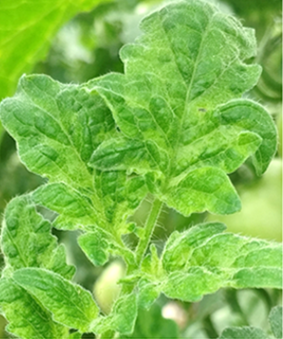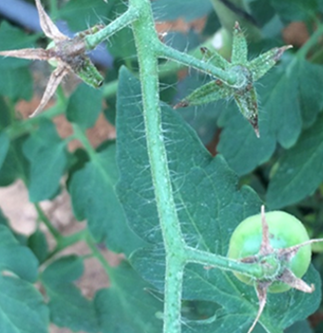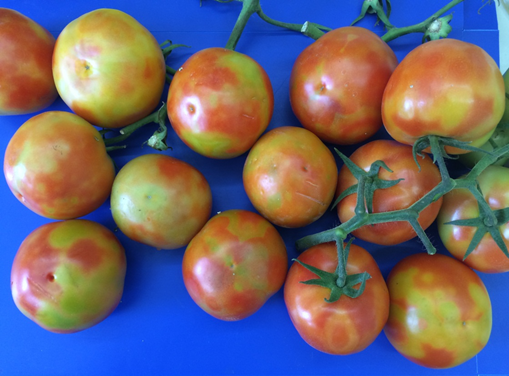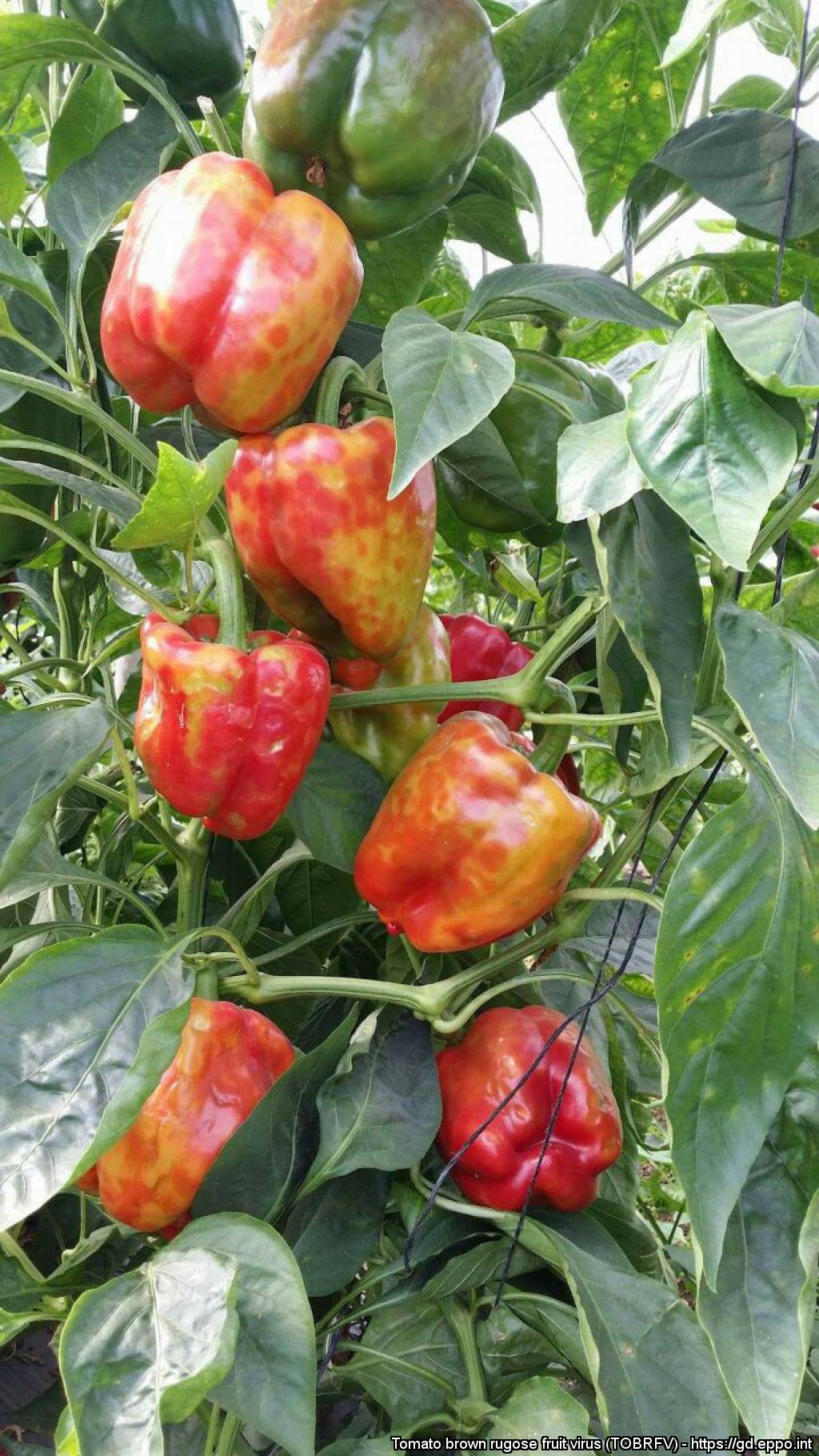Tomato brown rugose fruit virus
Tomato brown rugose fruit virus (ToBRFV) is a plant virus that affects:
- tomato
- capsicum
- chilli.
ToBRFV causes yellow and brown spots to appear on fruit, making it unmarketable.
This virus has not been detected in Australia, but it poses a biosecurity risk to Australian tomato and capsicum industries. Growers need to be aware of symptoms for early detection.
Symptoms
Symptoms in tomatoes

Leaves infected with ToBRFV show (Figure 1):
- yellowing
- mosaic patterns
- mottling
- leaf narrowing (occasionally).

Brown spots may appear on stems of fruit, leaves and the bracts surrounding the fruit.

Fruit infected with ToBRFV (Figures 2, 3, and 4):
- show brown or yellow spots
- deformation
- ripen irregularly, making it unmarketable.

Symptoms can vary depending on the variety of tomato. Tomatoes with the Tm-22 resistance gene (used against other Tobamoviruses) are susceptible to ToBRFV.
Symptoms on fruit could be confused with tomato spotted wilt virus (TSWV).

Symptoms in capsicum (Capsicum annum species complex)
Capsicum leaves infected with ToBRFV show (Figure 5):
- deformation
- yellowing
- mosaic patterns.
Capsicum fruits infected with ToBRFV are deformed with areas of yellow, brown or green stripes or blotches.
Spread of disease
ToBRFV can be transmitted through propagation materials such as:
- seeds
- plants for planting
- grafts
- cuttings.
It can survive in seeds, plant debris and contaminate soil for months. The virus can be also be transmitted through contact with equipment and clothing.
Overseas, bumble bees in glasshouses have been involved in spreading ToBRFV. Because of this, it's possible that insects could spread the virus if it established in Australia.
Managing disease
To safeguard your crops from ToBRFV:
- practise good plant hygiene
- source seed, seedlings and graft material that is free of ToBRFV from a reliable supplier
- test a proportion of seed and seedlings for ToBRFV
- monitor crops regularly for ToBRFV
- make sure staff and visitors comply with on-farm biosecurity and hygiene practices
- disinfect tools, propagating material and equipment with sodium hypochlorite (1% solution of a 12 per cent concentrate of pool chlorine)
- remove volunteer or wild tomato plants that could act as reservoirs for the virus, such as fat hen (Chenopodium murale), quinoa (Chenopodium quinoa), Petunia hybrids (garden plants) and black nightshade (Solanum nigrum).
Moving tomato and capsicum seeds
The federal Department of Agriculture has introduced emergency measures for the importation of tomato and capsicum seed. See:
Distribution of ToBRFV
ToBRFV was first reported in 2014 on tomatoes in Israel. It has since been reported in Europe, the Middle East, China, Mexico and the USA (California). The wide distribution of ToBRFV has been attributed the global movement of seed.
The ToBRFV has since been eradicated from tomato greenhouse crops in the United States and some European countries.
Reporting an unusual pest or disease of plants
Report any unusual plant pest or disease immediately using our online reporting system or by calling the Exotic Plant Pest Hotline on 1800 084 881. Early reporting increases the chance of effective control and eradication.
Please take multiple good quality photos of the pests or damage to include in your report where possible, as this is essential for rapid pest and disease diagnosis and response.
Your report will be responded to by an experienced staff member who may seek more information about the detection and explain next steps.
Report onlinePhoto credits
Figure 1 photo courtesy of Luria et al., Agricultural Research Organization, Volcani Center, doi:10.1371/journal.pone.0170429
Figure 2 photo courtesy of Luria et al., Agricultural Research Organization, Volcani Center, doi:10.1371/journal.pone.0170429
Figure 3 photo courtesy of Diana Godinez, EPPO Global Database
Figure 4 photo courtesy of Aviv Dombrovsky, Agricultural Research Organization, Volcani Center
Figure 5 photo courtesy of Raed Alkowni, EPPO Global Database